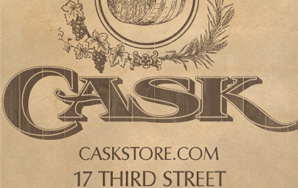Taste as Category, or Make What I Like Its Own Thing
What I was doing was creating a horizontal species — not a genus of any one species of booze but a palate, a flavor profile, that runs across the different verticals. Music and film, of course, use this horizontal mood mapping: if you like this music, you’ll like this other music that’s dark, drone, and…

I had a fantastic time yesterday at this impeccable purveyor of spirits: Cask, it calls itself. I bought four bottles of booze, each its own species: a rye, a scotch, a tequila, a gin.
But as I discussed each item with one or two of the shop keepers, it became obvious that I wanted the same experience, in a sense, from each: clean, heady, dry, spicy, complex. I used identical words to describe what I wanted but I used different differentiators to make clear what I did not want: no caramel in the rye, little peat in the scotch, not too floral in the gin, no dirt in my repasado.
What I was doing was creating a horizontal species — not a genus of any one species of booze but a palate, a flavor profile, that runs across the different verticals.
Music and film, of course, use this horizontal mood mapping: if you like this music, you’ll like this other music that’s dark, drone, and contemplative.
But even in those realms, especially in music, the mapping tends to stay within its vertical — if you like The Smiths, you might like The Cure. Of course you might.
What’s more complex is making the jump to a different vertical. People do this all the time. It’s called their taste. Algorithms have more trouble.
Taste is a predilection that can become a piece of code, a meme. It is an operation, a metabolism, that can become separated from the body that tastes (albeit it in a different form, necessarily).
A vertical category enjoys a certain kind of code, less operational than material: a bourbon uses corn, rye; tequila, agave; gin, fuck if I know. But within each vertical, within each prescription, there is necessarily a horizontal trajectory, a mode of putting those things together.
And this horizontal trajectory transcends the material — it is the operation, the invisible action, of putting things together.
These tastes, these metabolic styles, can become categories. But because we live in a vertical culture, we tend towards vertical categories. Horizontal categories are left to fashion and the arts (curation) but even more to the individual.
As de Certeau argues in The Practice of Everyday Life, the individual is not just a distinctive node, but a productive node within the strategies of power and capital. But he doesn’t focus on the kinds of species such nodes can produce and what such a knowledge might look like. ![]()

